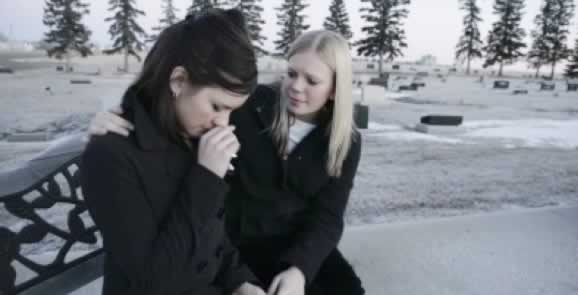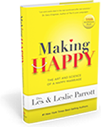One is the loneliest number that you’ll ever do Two can be as bad as one, it’s the loneliest number since the number one.
— Three Dog Night
Marriage was designed by God in creation to meet certain fundamental needs of the human being. When those needs are richly met, we flourish. Covenant is the structural principle of marriage, holding weak and fickle human beings to the promises they have made. When the marriage covenant is sturdy, it provides a stable and enduring context for the pursuit of the creational blessings of companionship, sex, and family partnership. Strong skill and virtue development in meeting creation-related needs and fidelity to covenant promises can lead to genuinely joyful marital partnerships. Such relationships reach near the pinnacle of what God created humans to be.
But as we all know, the story does not always go this way. In fact, it seems that it does not often go this way. Marriage becomes not a context of joy but of misery. A husband or wife wakes up each morning with heaviness of heart, saddened by the perception that the marriage is not working, perhaps even terrified by the oppression they experience. They are suffering. In some marriages, suffering is a daily and enduring reality. In almost all marriages, there are episodes or seasons of suffering.
Nobody tells the engaged or newly married couple to expect that marriage will bring suffering. Instead, what I call the “Love Incorporated” marriage technique books usually offer 1001 ways to achieve marital bliss. This leaves couples poorly prepared for the suffering that will almost inevitably come. And so, when suffering hits, the couple is bewildered. If the suffering lasts for very long or feels very intense, they may be tempted to abandon the marriage to relieve their pain. But abandoning a marriage brings its own form of suffering, and creates new suffering. Yet is such abandonment in every case wrong?
Experiences in ministry and personal life persuade me that this question — how to understand and deal with suffering — may be the most significant issue to be considered in thinking about marriage today.
Simone Weil made the striking observation that besides the physical element of suffering, and what she called the psychological element of suffering, there is a third element: the social. This is the experience of social degradation, ostracism, abandonment, or exclusion from community. German theologian Dorothee Soelle, reflecting on these themes, notes that most biblical accounts of suffering involve a confluence of all three themes. The psalmist (for example, Psalm 22, 73, 81, 116) laments the coming of illness into his life, bringing great pain. He feels a growing sense of psychological or spiritual suffering. And he feels abandoned by friends and intimates, excluded from the community of which he is a part. For Weil, affliction is the best term to use for the combination of these three dimensions of human suffering. Marital suffering certainly takes this particularly potent form at times: extreme spiritual anguish, physical distress, and social isolation.
Because suffering is a subjective and personal experience, it is often the case that the spouses do not experience the exact same level or type of suffering, even though they are enduring the same marriage. Harsh words may hurt one spouse more than the other. Chronic lack of communication, or lack of sexual intimacy, or lack of spiritual partnership, could be experienced as deeply painful by one spouse and not by the other. An act of sexual infidelity or violence may be experienced as creating an unbearable suffering, or it may not, depending on the way individual spouses interpret and react to these particular painful events.
This reminds us that the suffering evoked by spiritual pain is particularly subjective and profoundly affected by social factors. Imagine a culture in which extramarital sex is a routine and expected behavior, as in some contexts it has been. The discovery that one’s spouse had an extramarital sexual relationship would likely evoke far less suffering than if the same event occurred in our own society. Suffering has a social dimension. The early medieval philosopher Boethius said, “nothing is miserable unless you think it so.” Where we learn to “think it so” is in society.
Contemporary western societies are particularly averse to pain. We have developed the most advanced painkilling drugs in human history, and use them constantly. We are, in Elizabeth Wurtzel’s famous phrase, the “Prozac Nation.” Some push for legalized euthanasia because of the exaggerated fear that even the best painkillers will be insufficient at the end of life. It is not too pessimistic to say that we are by now a soft people. The generation that survived the Depression and triumphed over the Nazis gave birth to children and grandchildren who often think they need narcotics or antidepressants to get through the day. In such a society, our pain tolerance is low indeed.
Less dramatically, the experience of marital suffering is linked to marital expectations or desires. Short of objective physical or emotional violence, we suffer in marriage when the experience we are having falls short of our expectations. The question then that must be asked is this: what kinds of expectations of marriage are appropriate to the covenant promises actually exchanged? Excessive desires set the spouses up for the perception of suffering, in situations that would not have been perceived this way in earlier eras.
As any physician or psychiatrist could tell us, the suffering person seeks relief. Whether the pain is physical, spiritual, or both, when we suffer we want it to end as soon as possible. If the pain is bad enough, we will consider nearly any path that can bring relief. If the suffering experienced in marriage is bad enough, people will seek relief as well. This is part of what it means to be a sentient creature, and especially a human. It also speaks to the compelling nature of the needs we seek to meet in marriage. The mistake many people make, however, is in concluding that divorce is the best way to bring suffering to an end — when it may not be the best way, and it may not bring suffering to an end at all.
Sources of Suffering in Marriage
When Jesus taught that divorce is to be a very rare exception, and that illicit remarriages are adulterous, his disciples said: “If this is the situation between a husband and a wife, it is better not to marry” (Mt. 19:10) — and Jesus never disagreed, only responding with a description of the various ways that people become “eunuchs.” When Paul reflected on marriage, he wrote: “Those who marry will face many troubles in this life, and I want to spare you this” (1 Cor. 7:28b). These are not especially romantic declarations about marriage.
People need to be taught, as they were in more sober times, that a measure of suffering is an inevitable feature of marriage. Swept away by the candlelight-and-roses vision of marriage promoted by every bride’s magazine on the newsstand, we have misplaced this homely truth. Even Christians, whose doctrine of sin ought to help us know better, have forgotten to teach that marriage will not just fail to prevent suffering but actually bring suffering our way. “Not only does marriage fail to mitigate the struggles of life … it actually deepens them, rendering them even more poignant, because more personal.”
Suffering can enter a marriage through several channels. I break down these sources of suffering into two main categories: causes external to the marriage itself, and those that are internal to the marriage.
The traditional wedding vows reflect the awareness that every marriage is threatened by external enemies. Two types of enemies are named in the vows: poverty and illness. When the couple says “for richer for poorer, in sickness and in health,” they are promising to remain loyal to their marriage covenant regardless of the trials created by poverty or illness. These particular concerns reflect the conditions of an earlier, more agrarian era. The worst thing likely to happen to the medieval farmer’s family is either a bad crop (threatening starvation), or illness (threatening loss of help in family labor and loss of life).
Unemployment and financial pressures remain a major source of difficulty in marriage even today. Illness or incapacitation of a spouse or child likewise creates one of the major forms of marital suffering. Most readers will know of a marriage that did not prove capable of enduring such afflictions.
Numerous other factors extraneous to the marriage itself can create marital suffering. These can include illness or bereavement in the family or extended family. Job stresses that threaten to grind up the human spirit of one of the spouses are a major issue. A move demanded by school or work can be quite stressful. This list could be extended. Suffice it to say that most marriages will face such external sources of suffering at one time or another.
But improved economic and physical conditions in contemporary society mean that the internal sources of marital suffering are by now more significant. This is not a coincidence. Little irritations in the marital relationship don’t matter when the Nazis might land on Long Island any day, or when we’re not sure where the next meal is coming from. Lacking such pressures and fears, we have the tragic liberty to turn on each other or self-destruct.
Internal sources of suffering in marriage come in three primary forms. They may have to do with my partner, with me, or with the dynamics of our relationship.
Many marriages fail because of the moral, psychological, or spiritual problems of just one of the spouses. It is extraordinarily tragic, but all too common — a promising marriage between two people who love each other deeply is brought down not by any external stress but by the immoral or sick behavior of one of the partners.
A cousin of mine suffered the failure of her marriage due to her husband’s unshakable addiction to child pornography. Another marriage was brought down by a cocaine habit. A family member married a man who stole from her and opened credit cards in her name without her consent, ultimately bankrupting her. Drugs, alcohol, pornography, and gambling are among the major addictions that cause marital suffering, and are leading causes of divorce.
Psychological maladies of other types cause great suffering. I once counseled with a couple whose marriage was threatened by one partner’s chronic anxiety, anger, and simple inability to live peaceably. Here was a man whose wife, while not perfect, was more than adequate. However, quite tragically, he was unable to be happy; he could not receive the joyful partnership that was possible. He simply was not capable of living in peace with anyone, beginning with himself.
Another friend was heading toward marriage. However, her boyfriend lost his job and seemed not particularly energetic in pursuing another one. Month stretched into month, and it became clear that he was not so much lazy as incapable of functioning at a level required for minimal success in a competitive society. In this case, marriage was averted, but if this couple had been married his inability to function fully would have created considerable suffering that might have destroyed their marriage.
It is often falsely claimed that “it takes two” to bring down a marriage. It is truer to say that it takes two functional and sound people to create the possibility of marital success. All it takes is one addicted, or mentally ill, or poorly functioning, or morally bankrupt person to make marriage a living hell. That person might be my partner, or it might just be me.
The other internal source of marital suffering can be found in the inner workings of the marriage itself. Two morally and psychologically sound people can run into trouble in managing the marital relationship, which is its own entity with its own dynamics. One way to organize our thinking about this kind of suffering is to relate it back to the creation goods and covenant structure of marriage.
Suffering comes in marriage when aspects of companionship, sex, or family partnership fall far enough short of expectations as to create the experience of pain. Perhaps there is a failure to share adequately in the labor of running a household or meeting its expenses. Maybe there is a lack of time spent together in leisure. Perhaps the sexual relationship lacks passion or mutual satisfaction. The friendship dimension of marriage may have eroded. Or maybe chronic conflicts arise over how the children should be disciplined or educated. Marriage was created to meet very basic human needs in these areas, and such failures will elicit suffering.
Violations of the meaning of the marriage covenant itself will also create suffering. Any crossing of boundary lines related to sexual fidelity will be painful, even if it does not involve the act of adultery. Threats of walking out or loose talk of divorce can challenge the covenant promise of permanence. Failure to care compassionately for a spouse in time of illness or bereavement, or to work together in partnership during times of extra financial stress, can also cause great suffering. Mistreatment of children by one spouse can threaten the marital covenant itself. Most profoundly, failure to create an overall environment of love, honor, and respect undermines the relational spirit that brings the letter of the marital covenant to life.
The success of any marriage depends on meeting the creation-based needs of the spouse in at least a minimally satisfactory fashion and on maintaining faithfulness to the marriage covenant. These basics of marriage are not merely cultural but “natural,” that is, they relate to our humanity as created yet fallen beings. We are not talking here about the relational possibilities that marriage holds when every aspect of creation and covenant is maximally fulfilled. That’s the ceiling; here we are talking about the floor. If the basic minimum is not met, either or both spouses will suffer — and will probably look for some way to find relief.
What Shall We Do with Our Suffering?
Many Christians have joined their societal compatriots in seeking relief from suffering through divorce. Sometimes they offer little evidence that they have considered what the Bible really says about suffering itself. This is a great tragedy. It has led to the unnecessary destruction of many marriages and the collapse of Christian credibility on this issue.
The Bible is an infinitely realistic book. Coursing through its pages are dozens of references to suffering: its various types and sources, its costs, its meanings, its possibilities, and how a faithful people of God are to interpret and respond to it. Few themes receive more attention in Scripture. Let’s linger over the biblical witness and see if it can speak helpfully to seasons of suffering in marriage — without in any way underwriting victimization or oppression in marriage and family life.
In God’s good and perfect creation before the fall there was no suffering. But human disobedience introduced suffering into God’s good world. Sin and suffering have been linked, from the very beginning of both.
In the Genesis account, sin introduces suffering into creation as a form of divine punishment. The serpent is punished with a lifetime of crawling, eating dust, and being feared and hated by human beings (Gen. 3:14 – 15). The woman is punished with great pain in childbearing and subordination to her husband (Gen. 3:16). The man is punished with uncooperative soil and arduous labor (Gen. 3:17 – 19). All are punished with mortality (Gen. 3:19). Adam and Eve are punished with exile from the garden, symbolizing their broken relationship with God (Gen. 3:21 – 24).
So in biblical terms there is an inextricable connection between suffering and sin. Sin causes suffering; suffering exists because of sin; if there had been no sin there would be no suffering. Sin often brings judgment that causes suffering (Num. 14:33, Lam. 1:12). And yet, as Pope John Paul II has noted, “it is not true that all suffering is a consequence of a fault and has the nature of a punishment.”
A proper biblical understanding of sin identifies it not just with particular acts or our propensity to do wrong but with a broader degradation of the human condition. Sin is not just violation of God’s moral order but also the disordered state of the human heart, human relationships, and human society. This disorder is the context in which we all live. It affects not just human beings but the entire creation, which also has become disordered and fallen into corruption as a consequence of human wrongdoing. As Paul put it, “the creation itself will be liberated from its bondage to decay and brought into the glorious freedom of the children of God. We know that the whole creation has been groaning as in the pains of childbirth right up to the present time” (Rom. 8:21 – 22).
With the entire human and global order in such spiritual travail, it is inevitable that each particular human being, and the human family as a whole, will experience suffering. Sometimes this suffering will clearly be linked to particular sinful acts, our own or someone else’s; other times it is impossible and inappropriate to draw such a connection (see John 9).
Whenever we are tempted to forget this point, we would do well to return to the book of Job. For Job is the story of an innocent man’s suffering. Afflicted with the loss of his family, all his animals and property, and finally his health, Job protests bitterly to God at the injustice of his fate. For thirty chapters his three friends try to help Job make sense of his suffering by attributing it to some wrong that Job has done. Appropriately, Job denies this. He has done nothing wrong, but suffering has come upon him anyway. In misery, he seeks an explanation from God — as most of us do when suffering comes.
God finally makes his appearance in chapters 38-41. He never gives Job an explanation of his suffering; and yet the point of the passage is not so much what God says but that he responds at all. God recounts for Job the glories and complexities of the universe that he has made and challenges Job’s right to “correct” him (Job 40:2). Job ends his questioning with a kind of submissive gratitude for God appearing to him at all: “My ears had heard of you but now my eyes have seen you. Therefore I despise myself and repent in dust and ashes” (Job 42:5 – 6).
God has shown up and has been with Job in his suffering. After days of questioning and challenging God, it is God’s presence that finally satisfies his need, or at least ends his struggle by overwhelming him with the view from God’s perspective. The epilogue, in which Job’s family and properties are restored, is not the heart of the story. God’s response to Job’s innocent suffering is not so much to make all things right again, but simply to be present to Job in his despair.
This is the next main strand of the biblical witness about human suffering: God is present to and with his suffering people. God hears the cries of the afflicted. At times, though not always, God in his grace acts to rescue those who suffer, as in the Exodus (Ex. 3:7) or the healing acts of Jesus toward the suffering (Mt. 4:24, 8:6, 15:22, 17:15). Other times God’s activity is limited to comforting his afflicted ones (2 Cor. 1:3). God is present with sufferers as they suffer, offering care and love. This is not deliverance from the situation of suffering but merciful divine presence in the midst of suffering. Scripture is honest in recording times when God’s presence seems very elusive, when God’s comfort is not found. And yet believers are called to turn to God and ask for his presence in times of suffering, with the promise that God is faithful, just, and loving.
The New Testament witness about Jesus clearly teaches that part of his mission was to suffer for the sake of the world: “From that time on Jesus began to explain to his disciples that he must go to Jerusalem and suffer many things at the hands of the elders, chief priests, and teachers of the law, and that he must be killed and on the third day be raised to life” (Mt. 16:21; cf. Mk 9:12; Lk. 24:26). That Jesus must suffer to fulfill his mission was clearly a part of the apostolic proclamation (Acts 3:18, 17:3, 26:23).
The primary Old Testament text that informed this concept was Isaiah 52:13-53:12, the famous “Suffering Servant” passage. Here the servant is “despised and rejected by men, a man of sorrows, and familiar with suffering” (53:3). This suffering is not an end in itself, however, but is undertaken for the sake of redemption. By enduring suffering as an innocent and without resistance on behalf of the sins and wrongs of others, the suffering servant has won salvation for his people. “For he bore the sin of many, and made intercession for the transgressors” (Isa 53:12). Jesus the Son of God takes human suffering upon himself and therefore into the very heart of the Deity.
New Testament writers were transfixed by the vision of Jesus as the suffering servant, whose torture and death atoned vicariously for the sins of the world, and whose glorious resurrection vindicated his identity as God’s Son and the world’s Savior. Identifying deeply with him, they promoted to their readers and faith communities a cruciform vision of discipleship in which Christians would follow the path of their master. They would, if necessary, suffer for the cause for which Jesus suffered and for the name of Jesus, even rejoicing and counting themselves blessed to have the privilege of doing so (Acts 5:41; Phil. 1:29; 1 Pt. 4:13).
As suffering came amidst various persecutions, the early Christians further developed a profound practical theology of what might be called the discipleship value of suffering. John Paul II finds in the entire biblical witness, in fact, the same theme: suffering “creates the possibility of rebuilding goodness in the subject who suffers.” Because suffering hurts we naturally flee from it, but New Testament writers teach that it is precisely through suffering that growth in discipleship occurs.
This is articulated in a rich variety of ways. Paul says that in suffering we experience God’s comfort, which we can then share with others who also suffer. As we plunge into levels of suffering we could never have imagined, and find God’s comfort and presence there, we grow profoundly in patient endurance and dependent trust in God (2 Cor 1:3 – 11). Suffering also produces virtues such as perseverance, character, and hope (Rom. 5:3), which cannot be produced under conditions of comfort and ease.
The entire first epistle of Peter is essentially a meditation on suffering for Christ. Written to Christians under severe persecution, this letter reflected deeply on the trials these communities in Asia Minor were experiencing and the meaning that could be drawn from them. Peter finds in trials an occasion for purification. Like a refiner’s fire, trials test the believer’s faith, showing its real quality and at the same time strengthening and toughening it (cf. 1:7).
Peter finds in suffering a morally purging power. “He who has suffered in his body is done with sin” (4:1b). The persecutor’s lash, in a sense, brings people to their senses, leading them to put sin behind them with ever more decisiveness and to die to the world and its enticements (4:2-6). They now live for God rather than themselves. It is interesting that the writer of Hebrews claims that “the author of their salvation,” Christ himself, was “made perfect through suffering” (Heb. 2:10).
Rather than succumbing to instincts for violence or retaliation, unjustly persecuted Christians are called to identify all the more closely with Jesus, who suffered without retaliation and died vicariously in our place (1 Peter 2:20 – 25). Out of gratitude for him, in obedience to his command, and in imitation of his pattern, Christians are called to “follow in his steps” (2:21), patiently enduring all persecution and awaiting a future hope that no one can ever take away because believers are “shielded by God’s power” (1:5). Suffering creates a deep sense of solidarity and connection between the believer and Jesus, as many Christians have attested through the centuries.
Peter, like other New Testament writers, is entranced by the glory that is coming when God will bring about his ultimate triumph in Jesus Christ. That inheritance awaits those who persevere, who don’t give up or give in, who cling tightly to the suffering Savior even as they themselves suffer greatly. An inheritance is coming that can never “perish, spoil, or fade” (1:4). The “Chief Shepherd” will appear and we will receive a “crown of glory” that can never fade (5:4).
At the heart of this vision of suffering is hopeful trust in a faithful God. The psalmist had written “My comfort in my suffering is this; your promise preserves my life” (Ps. 119:50). Peter calls his readers to trust the one who “entrusted himself to him who judges justly” (1 Pt. 2:23). God will triumph. His enemies will be defeated and his promises will be fulfilled (2 Th. 1:5). Current trials can be endured because God is trustworthy and ultimately will do what he has promised, just as he has done in the past. Don’t be among those who collapse under persecution and ultimately must be counted among the faithless who disown Christ (2 Tim. 2:12-13). Instead, “Be faithful, even to the point of death, and I will give you the crown of life” (Rev. 2:10).
When suffering comes in marriage, the person seeking to be formed by the biblical witness has rich resources for redeeming his or her suffering, or for at least making sense of it. These convictions do not resolve all issues related to particular decisions Christians must make, but they do help set the context in which they should be considered.
Suffering is inescapable in a sinful world. Therefore, I will not imagine the possibility of creating a life for myself in which there will be no suffering. I will be realistic about the boundaries the human condition sets on all human aspirations. I will consider the suffering faced in my current situation over against the suffering I would face in realistic alternative situations.
God is present to his suffering people. Therefore, I will cry out to him in my times of frustration, sadness, and despair. I will not attempt to endure my suffering apart from the presence of God. With confidence, I will turn to God and draw comfort from his presence. I will not necessarily expect to get all my questions answered, or even to be delivered from all my suffering, but I will be comforted by his presence.
Jesus was a Savior whose innocent suffering brought redemption to the world. Therefore, I will be alert to the redemptive possibilities of the suffering I am now experiencing. Perhaps I can be an example to my children of patient endurance in times of trial, and thus help build character in them that will strengthen them for their future marriages. Perhaps my steadfast love amidst suffering will have a transforming impact on my spouse, or can serve as a good example to friends who know the situation. This does not mean I will endure mistreatment indefinitely. But I will assess the situation with Jesus’ example in mind.
Suffering has discipleship value for the follower of Christ. Therefore, I will look for ways in which my current suffering can deepen my faithfulness to him and enable me to grow both spiritually and morally. My focus will shift from whether I am happy, as Gary Thomas has written, to how this situation can help me become more holy.
When Is It Permissible to End a Marital Covenant?
The aggrieved and suffering spouse who is loyal to the marriage covenant will not lightly end a marriage under any circumstances. Many steadfast men and women have endured the acute suffering caused by episodes of infidelity, acts of violence, and desertion and worked hard for change and for reconciliation. In some cases, hearts and lives have been changed and marriages saved. This indeed, is grace and mercy.
But still we must ask the question of whether, and when, it is morally permissible to end a marital covenant. Divorce is never formally introduced in the Old Testament. It simply makes its appearance as an existing practice, most significantly in Deuteronomy 24:1?4. This text assumes the practice of divorce, describes it and its grounds in passing, and then offers a case law application related to remarriage. This text became foundational for the Jewish rabbinic tradition, which debated the grounds for divorce based on Deut. 24:1a: “If a man marries a woman who becomes displeasing to him because he finds something indecent about her ? ” Two poles of interpretation emerged, a conservative school limiting the grounds for divorce to “indecency,” and a more liberal school permitting (a man to) divorce for nearly any reason based on the language of “becomes displeasing to him.”
Jesus is recorded as teaching about marriage in two primary texts that parallel each other with subtle differences. These texts are Matthew 19:2-12 and Mark 10:2?12. Small, slightly varied fragments of the teaching recorded in these texts are found in Matthew 5:31?32 and Luke 16:18.
Let’s take the Mark 10 passage as our base, working from that to compare with Matthew 19 where significant differences emerge. Mark 10:2?12 has Jesus teaching about marriage in the context of being questioned by the Pharisees about divorce. The narrator tells us that they question him about divorce to “test” him; their goal was to trap Jesus in his own words rather than to gain knowledge about God’s will. This must be kept firmly in mind or we too will ask Jesus the wrong questions.
The Pharisees want to know whether it is “lawful” for a man to divorce his wife (Mk. 10:2). It was lawful in Jewish society for a man to divorce his wife; in fact, it was apparently quite common. The rabbis debated what were the lawful grounds for divorce, not whether divorce was permissible. It is this sense of the question that Matthew’s version picks up (19:3).
They want to ask Jesus about the legalities of divorce. In Mark, Jesus responds in the way they might have expected, asking about the dictates of Jewish law by referencing the “command” of Moses. In response, they cite Deuteronomy 24:1.
Jesus then surprises his listeners by moving the discussion to the book of Genesis. He acknowledges that the permission to divorce is (implicitly) found in Deuteronomy 24:1 but that this was because their “hearts were hard.” At the “beginning of creation God made them male and female” (Mk. 10:6, quoting Gen. 1:27). Thus man and woman leave father and mother and cleave to each other. “The two will become one flesh” (Mk. 10:8, quoting Gen. 2:24); “they are no longer two, but one.” Therefore, “what God has joined together, let man not separate” (Mk. 10:9).
Jesus reclaims marriage from the divorce lawyers. He demands that the discussion of God’s will for marriage return to the original intent of the Creator. He explicitly locates marriage as an institution existing “from the beginning of creation,” and describes the one-flesh union that exists in marriage. He intensifies the “one-fleshness” of marriage by saying that the couple is “no longer two but one,” making clear that one-flesh means more than occasional marital sexual union. Then he asserts that God has joined together each husband and wife and demands that “man” not sunder what God has joined.
The creation origins and nature of marriage are thus reaffirmed. But so is a strong emphasis on the covenantal structure of marriage, especially the promise of permanence. This point is only emphasized in the next section of the teaching, where Jesus declares that “anyone who divorces his wife and marries another woman commits adultery against her” (Mk 10:11), and that the same would hold true for the woman who divorces her husband. The Jewish listener would not have needed to be reminded that adultery was a crime officially punishable by execution in Jewish law.
It has been noticed that the Mark and Matthew texts diverge here. Matthew has no reference to the woman initiating divorce, perhaps because if women ever initiated divorce in first-century Palestinian Jewish life, it was very rare. There was certainly no explicit provision for it in Old Testament law.
The other divergence is the famous exception clause in Matthew. Matthew’s Jesus modifies the apparent “no divorce, no remarriage” stance with an exception in cases of sexual immorality (NIV: “marital unfaithfulness”; Greek: porneia). This exception clause, and the fact that it is found only in Matthew, has bedeviled and distracted Christian interpreters for centuries, and remains a vexing interpretive problem today.
The main point that needs to be made about the entire passage, whether in Matthew or in Mark, is that Jesus responds to a question about the legality of divorce by pushing past it to reaffirm both the creation purposes of marriage and the covenant structure of marriage. His teaching about marriage itself is best interpreted as offering an authoritative endorsement of God’s will as revealed in Scripture, with a measure of intensification and a decisive shift in focus away from how we might finagle exceptions. His teaching about remarriage is best interpreted as a forceful prophetic rejection of legally sanctioned adultery; that is, the abandonment of the “wife of one’s youth” in order to be with another woman. It may be legal, but it’s still adultery. It was true then, and it’s true now. Malachi had made the same point.
Paul’s largest section on marriage and divorce is found in 1 Corinthians 7. Apparently responding to a comment from this troubled Christian community disparaging marriage (7:1), he affirms that (most) believers should be married (7:2). He grounds this declaration in the creation need for sex (7:3?5, 9, 36-38) and the fear of sexual immorality. He articulates his own preference for celibate singleness (7:6?7), but notes that people are gifted in different ways. This section offers a helpful affirmation of the creation purposes of marriage related to sexuality, though what has often been interpreted as a grudging spirit here has darkened the Christian vision of sex in damaging ways.
In dealing with the issue of divorce, Paul reaffirms an oral tradition of the teaching of Jesus that corresponds rather closely with the passages in Mark and Matthew. Believers are not supposed to divorce one another. If they separate, they should abstain from marrying someone else and instead be reconciled (7:10?11). Here Paul is reaffirming the covenant permanence of marriage, with the extra note emphasizing the central Christian focus on reconciliation.
Then Paul deals with a situation apparently arising with some frequency in Corinth — the religiously mixed marriage. A Christian is married, apparently unhappily, to an unbeliever. Should she initiate divorce, perhaps in order to remain pure of the taint of being joined with an unbeliever, even a worshipper of pagan gods?
Paul says no. The covenant of marriage is sufficiently binding, in the view of this rabbinically trained Jewish Christian, that even marriage to an unbeliever is not enough to justify ending it (7:10?14). Contrary to the decision for mass divorce of pagan partners mandated in the period of Ezra and Nehemiah, Paul has hope that the unbelievers (and their children) will be changed by the believers, not the other way around.
However, in a final twist, Paul does open the door to divorce (and, apparently, the morally justifiable prospect of remarriage) if the unbeliever “leaves” (7:15). In such cases the believer is not “bound” to the marriage (7:15, 27-28). Though the believer cannot initiate a divorce, he or she may be forced to accept it as a fact if initiated by their uncooperative and hostile partner. Why? “God has called us to live in peace” (7:15) and “How do you know ? whether you will save your [spouse]?” (7:15?16).
How shall we interpret these cryptic comments? Paul is doing three things here. First, he is acknowledging that “peace” in marriage has significance. This is a way of saying that the creation good of companionship matters, and that its opposite, constant conflict, is a dismal way to live. Second, in view of his earlier comments about marriage as a context for safe and sanctioned expression of the sexual drive, permanent separation without possibility of divorce or remarriage would also violate the creation good of sexual fulfillment (and open both people to the likelihood of sexual immorality). Finally, in noting that it is not always possible to win over a spouse to faith in Christ, Paul is recognizing that the covenant of marriage is deeply threatened by conflicting “religious” covenants on the part of the spouses. All three of these issues have surfaced in historic Christian treatments of divorce.
These texts have been relentlessly parsed for legalistic justification for and against divorce and remarriage for Christians. But that misses the point. Neither Jesus nor Paul wanted to emphasize when it might be permissible to divorce or remarry. Instead, they wanted to call believers to keep their marriage covenants and fulfill God’s creation purposes in marriage.
Combing through both the texts and the history of their interpretation leaves me convinced that the best summary of a moral standard related to divorce is this: the covenantal structure of marriage is so binding that only a fundamental and irreparable breach of the marriage covenant can morally justify divorce.
Jesus, at least in Matthew, notes that sexual infidelity in marriage is a sufficiently grave violation of covenant that divorce might be permissible. Paul adds another possibility, desertion — by an unbelieving spouse. This text can be interpreted somewhat more broadly to encompass other covenant violations, and it has been read that way in Christian history. The church father John Chrysostom, for example, interpreted “desertion” in 1 Corinthians 7:15 to include situations in which an unbelieving spouse demands that a believer participate in pagan religious rituals or else part ways. He interprets the reference to “living in peace” in the same verse as speaking to the issue of violence: “If day by day he buffet thee and keep up combats on this account, it is better to separate.”12 We have already seen that grave violation of the parental covenant in relation to a couple’s children raises the serious possibility that covenant obligations to children may override covenant obligations to a covenant-breaking spouse. In short, it is impossible to offer any definitive list of covenant-destroying marriage misdeeds.
As for remarriage, here the history of legalism has had especially devastating consequences. Jesus linked remarriage and adultery in order to warn men that legal niceties do not cover over the reality of adulterous covenant-violating. If a man leaves his perfectly faithful and well-intentioned wife to go sleep with and eventually marry his secretary, he is adulterating his covenant with his wife (and his children), regardless of whether he can get a judge to give him a divorce decree. This is the point of the remarriage/adultery teaching, and it makes sense. Close reading of Paul’s treatment of divorce in 1 Corinthians 7 helps us see that Jesus did not intend to bar all remarriage or classify all remarried persons as adulterers. He did intend to stop his hearers from finding false comfort in legal procedures that enable covenant breaking.
Philip Turner has pointed out that the root metaphor of a marital language of covenant is “relation.” The Catholic tradition has employed a root metaphor of “substance” or “being.”13 For historic Catholic thought, marriage is indissoluble because a metaphysical entity has supernaturally come into existence that literally cannot be destroyed. In shifting to the biblical language of covenant, the Protestant Reformers changed metaphors. For them, marriage is a human relationship with particular ends and particular obligations. Though the marriage covenant is solemn and binding, it is still relation-based — that is, it can be destroyed by the misdeeds of those human beings who participate in it. Divorce under such circumstances can be understood as the legal acknowledgment that the marriage covenant has been irreparably broken.
Does this mean that the marriage covenant was conditional, rather than unconditional? If so, how can it be said to be a covenant? If not, how can it be ended? This vexing question cannot easily be settled with reference to the Bible, because Old Testament covenant language is at times both unconditional (“I am making between me and you and every living creature a covenant for all generations to come” — Gen. 9:12) and conditional (“If you obey me fully and keep my covenant, then out of all nations you will be my treasured possession” — Ex. 19:5).
Margaret Farley has proposed a very wise answer to this dilemma. God’s covenant promise is unconditional in that “it cannot be undone or withdrawn.” Especially in light of the decisive act God undertook on the Cross, it is clear that “God’s love is not pledged conditionally.” But on the other hand, the nature of human response to God’s unconditional love does matter, because the goal of God’s covenant efforts is to establish and maintain relationships with people, and there can be no relationship that is not mutual, not two-sided. God reaches out to people in love and implores them to love him wholeheartedly in return (Mt. 22:36-40). God’s goal in doing this cannot be reached unless people freely respond in love. And this God will not compel, indeed cannot compel, if he would respect their freedom as persons.14
The same thing is true in marriage. The covenant promises made on the wedding day are unconditional in that they are not revocable at will. They cannot simply be withdrawn. However, the nature of the covenant partner’s response does matter. If you eventually respond to my covenant love with rejection, hatred, and infidelity, it does not affect the nature of my promises to you. But it does break my heart, because it annihilates the possibility of achieving the very goals to which we both once promised to give our lives. And if it becomes clear that the relationship the covenant was intended to establish, the goals we both committed to, the sacred vows we took, and the rules that were stipulated to achieve those goals, all stand in ruins, then even the most faithful covenant partner may have to acknowledge that the covenant is damaged beyond repair.
One puzzle remains: whether frustration in getting creation-based needs met might also constitute grounds for divorce. The case of fundamental covenant violations directly addressed by Scripture, like adultery and desertion, is fairly clear. But what about problems that go to the heart of the creation purposes of marriage: companionship in labor, life, and love, sexual relations, and family partnership?
My response remains a covenantal one. Part of what spouses promise to each other is to devote themselves to meeting one another’s God-given sexual needs, bringing new life into the world together and raising that new life responsibly, sharing in the labors necessary to support a family, and providing for one another a measure of good-willed companionship. In other words, a good faith effort to meet one another’s creational needs is itself part of the marital covenant.
Because human beings are imperfect sinners, we all fall short of fulfilling such promises in all their potential. Falling short in a way that can be expected of normal sinful human beings is not grounds for divorce. However, situations emerge in which a pattern develops of willful and repeated violations of both the letter and the spirit of such promises. Remember that covenants don’t just stipulate behavior but they also establish a kind of marital community. This covenant-formed community hinges on a good-faith effort on the part of both parties to live out the relationship promised at its inception.
It is obvious that a pattern of physical and emotional abuse, the steady refusal of conjugal relations, the willful mistreatment or abuse of the couple’s children, the refusal to contribute any effort to shared family labors either paid or unpaid, and the creation of an environment of unremitting hostility or hatred are all examples of violations of the covenant promises made on the wedding day. The circumstances in which such promise-breaking could create sufficient suffering to morally justify divorce cannot be determined by way of a general statement, but certainly such circumstances exist.
Covenants protect valuable relationships from harm. In Margaret Farley’s words, “They take their meaning from the love they are designed to serve. They are relative in meaning and in value to the substance they help to frame.”15 Biblical prohibitions against divorce support marital covenants and are aimed at protecting the innocent, especially women and children, from abandonment and harm. A certain measure of suffering is a reasonable price to pay to preserve a marriage covenant. But when a marriage relationship itself becomes fundamentally and irreparably harmful and oppressive, then it is probably the case that the marriage, rather than a divorce, poses the greater threat to the well-being of the most vulnerable.
The spouse suffering in such a marriage will likely consider divorce. But the Christian spouse in such a situation should not attempt to determine alone whether the state of affairs in his or her marriage constitutes a fundamental and irreparable breach of the covenant. One key role of the Christian community is to stand in the gap with suffering spouses and help them discern the nature of their moral obligations in times of great suffering — rather than turn away from them in their sorrow. In so doing, the community must take seriously both the marriage covenant and the current suffering. Mike Mason says that the marriage vows ask this question: “How dark a night are you prepared to pass through” with this person?16 In the middle of such a dark night — in the midst of a marital nightmare — no believer should find herself alone.
A Personal Word
This reflection on suffering in marriage could not have been written by a blissfully happy young newlywed. Neither, however, could it have been written by an unhappily married cynic. It is instead the product of a man whose own marriage has experienced a couple of very difficult seasons of suffering, primarily of my own making, before coming out in a healthier place on the other side each time.
While originally drafting this essay I discovered a fragment that I wrote at perhaps the worst moment that my wife Jeanie and I have ever faced. I was in great anguish, and was trying to think my way through it.
At the top of the page I wrote “Status of a Marriage.” Under this heading I listed eight options:
- Ecstatic Union
- Intimate Partnership
- Cordial Friendship
- Peaceful coexistence
- Tense silence
- Active hostility
- Full-scale belligerence
- Irreconcilable brokenness
Irreconcilable brokenness
Finally, at the bottom of the page, I jotted these thoughts: “A marriage’s status can vary over time. What to make of our swings between ecstatic union and active hostility? Should I seek to narrow the range (say, options 3-4) so the swings are not so intense? Right now I just want to move from 7 to 5 and perhaps to 4 for a goal.”
I record these words publicly because they teach better than anything else a very important truth. Suffering comes in marriage, but if we endure, if we hold true, it does not necessarily stay. Darkness may come with the night, but joy comes in the morning.
As I write these words, I would place the “status of our marriage” at a 1. For several years now, we once again have had the joyful experience of consistently living at 1 or 2. Of course, these numbers are symbols and approximations. But they symbolize and approximate something very important. Seasons of suffering in marriage push individuals and couples to levels of endurance they may never have imagined having to reach. Such seasons test the strength of the marital covenant beyond what the blushing bride and groom could ever have envisioned on the day they took their vows. Those who have not (yet) gone through this vale of tears have no idea what it is like. Those who have been there know exactly what I am talking about.
Mike Mason was right in saying that we don’t keep vows; the vows keep us. When covenant structures our marriage relationship, that covenant sometimes is the only thing that holds us. When my spouse for a time becomes my enemy, and none of those lovely creation-needs are getting met, still we have our covenant. Unless that covenant has been irreparably breached by my spouse, I have no moral right to breach it either, despite a time of misery. That remains my best statement of an ethic for divorce. Our covenant held, the crisis passed, and today we enjoy an immensely joyful marriage. What about you?
David P. Gushee is Graves Professor of Moral Philosophy and senior fellow of the Carl F. H. Henry Center for Christian Leadership at Union University.
Excerpted from Getting Marriage Right by David Gushee
Used by permission of Baker Books, a division of Baker Publishing Group, Copyright © 2004 . All rights to this material are reserved. Materials are not to be distributed to other web locations for retrieval, published in other media, or mirrored at other sites without written permission from Baker Publishing Group.











